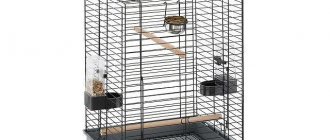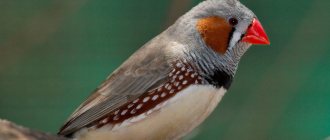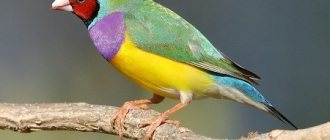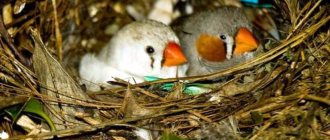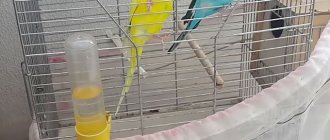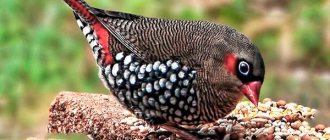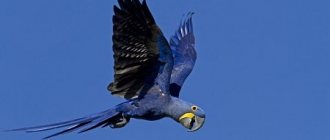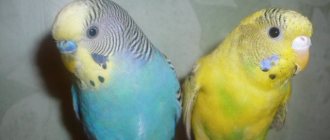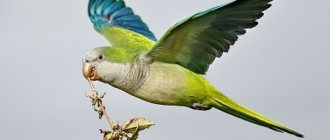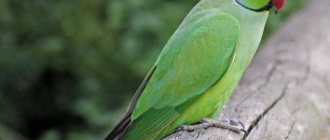Each species of finches is interesting in its own way: Japanese are the most caring parents, Gouldian are bright multi-colored “sissies”, zebra are lively and cheerful singers. The main character of this article is the rice finch, the largest representative of the genus. In addition to its impressive size, it also has other features, for example, it looks very elegant. The drawing is quite timid, but it endures tense situations without consequences. This bird adapts well to new conditions, reproduces easily, has good health and high vitality.
Appearance
Such creatures are famous for their appearance. They have beautiful plumage and no less beautiful and melodious singing. These creatures will do well in captivity. One of the most common colors is ash.
In such species, a contrasting black and white color on the head is common. The cheeks of this species are white, and the top of the head seems to be covered with a black cap. The beak is red. In the tummy area you can see gray feathers. The tail area is completely white. The back, chest and sides of this type of bird have a more saturated gray tint.
Some birds are characterized by a white color throughout their body. This variety was specially bred by man.
It can also be noted that the gene for “whiteness” is a completely dominant gene. Individuals with white color are more stress-resistant. In addition, such individuals reproduce faster and produce more offspring. Each type of bird is beautiful in its own way.
The body length of Rice Finches is 14 cm, the tail length of these representatives is 5 cm.
Price, how much does painting cost?
Despite their beautiful singing and unusual appearance, rice finches are not very highly valued. Specialist breeders sell chicks at a price of 700-1500 rubles. In a professional nursery you will be offered a ringed pet and the price will be higher.
At poultry markets, depending on the region, you can buy rice finch at a lower price - 300-400 rubles. However, you run the risk of purchasing an already sick bird, since birds there are often kept in poor conditions: cramped conditions, almost complete lack of hygiene and poor food.
Rice finches are ideal pets. They are unpretentious in food and maintenance. Attractive appearance, calm character, cheerful singing will delight you for many years. The main thing is to comply with the requirements regarding nutrition, hygiene and other aspects of their life.
Watch in this video how active and cheerful these rice finches are:
Source
Habitat
These birds live in the territory from Sumatra to the Moluccas Islands. This type can also be seen on the islands of Sri Lanka. At other times they were resettled to the islands of Zanzibar and Saint Helena. Representatives of this genus can be found in East Africa, Southeast Asia, as well as Japan and Hawaii. They largely deserve their name because they cause significant damage to the rice crop. They often roost high in trees on farmland.
Description
Exotic birds from the wax-billed weaver family originally lived on the islands of Java and Sumatra. One of the names associated with this is “Javan sparrow”. Subsequently, the range expanded, and now wild rice finches live on other islands of the Indian and Atlantic oceans, and eastern Africa. People themselves unwittingly contributed to increasing the area of their distribution by cultivating cereal fields. For their love of rice plantations, the birds received the nickname “rice eaters” - in Latin Padda oryzivora.
The panther bird has long passed the stage of domestication in Southeast Asia, but only at the end of the 19th century was it brought to Europe. The naturally colored gray finch looks neat and elegant: its plumage is dominated by pastel colors with clear boundaries. The main part of the feathers is painted in a bluish-gray tint - these are the back, chest and wings. The tail and head are black. From the chest to the undertail, the feathers gradually change color: from light brown to beige.
Features of the appearance of the rice finch:
Songbird lovers enjoy breeding rice finches. In addition to the natural color, other patterns have been developed: white, marbled, silver, fawn, cream.
Lifestyle
Wild representatives of this type are distinguished by great endurance. They are quite patient. According to poultry farmers, Amadins drink quite a bit even when there is a lot of water left in the drinking bowls. In conditions of severe water shortage, they survive by drinking a lot of highly salted liquid.
Those who want to purchase them and keep them at home should know that the cost of one rice finch is 4 - 5 thousand rubles. Also, the cost of them is determined by the zone of their acquisition. You can buy rice finches in a specialized store or from a breeder.
Possible diseases
Like most birds, rice finches suffer from parasites. Feather and tracheal mites pose a particular danger to them. Most often they appear if maintenance at home does not meet the minimum requirements. For example, if the cage is cramped and rarely cleaned.
Drawings can get sick and acute respiratory viral infections, lose feathers as a result of shock molting, or become infected with internal parasites. Under any circumstances, you should not try to cure them yourself. It is better to consult a doctor immediately.
Content
Keeping a bird is quite difficult. The first step is to purchase a cage. It needs to be very wide and spacious. Ideally, it should accommodate a pair of finches, as well as their brood. The ideal option for this type of bird would be square or rectangular cages. They often have a rounded top.
In such cages, finches often get lost and begin to scurry around the entire area of the cage. These birds are very freedom-loving.
The cage should have several drinkers and a feeder. Small perches should be installed in the side areas of the cage. Preferably they can be made from birch. It will be convenient for the birds to jump on such perches throughout the day.
Birds will also like bathing containers.
Description
Rice finch (rice finch) is the most famous and popular variety of its genus. The birds were first discovered on the islands of Bali and Java. Many fields here are sown with rice, which birds feast on. This is what explains their name. In winter, the danishes live in gardens and groves, where they feed on various seeds. But with the onset of spring, they again switch to their favorite rice. As a rule, in nature, birds live in pairs or small families.
The most common type of color is ash. Such designs have a contrasting black and white pattern on the head. At the same time, their cheeks are snow-white, and the top of their head seems to be covered with a dark cap. The part of the head under the red beak is also dark. Pale gray feathers can be seen on the belly. Sometimes they have a pinkish or beige tint. The back, sides and chest have a more saturated gray color with a pearl tint. The tail is almost black, and the area under the tail is completely white.
Some birds have snow-white feathers all over their bodies. This spectacular variety was bred by man. In this case, the “whiteness” gene is dominant. Therefore, when crossing individuals of natural (gray) color and snow-white birds, most of the chicks turn out to be white. Interestingly, light-colored specimens are more stress-resistant. In addition, they reproduce more actively and produce large offspring. There are also rare color variants - for example, birds with silvery soft gray feathers and a white belly.
All options are beautiful in their own way and find their fans. It is worth considering that the color of the plumage and beak changes slightly as they grow older. The individual acquires the final version of the “outfit” by 4 months. It is noteworthy that the color of males and females is almost the same, while in many birds the males are more beautiful. This makes them even more desirable pets.
Determining the sex of the rice finch is not easy. This can only be done by comparing several individuals.
Males are distinguished by a slightly larger beak with a “hump.” They also have larger heads, unlike the graceful females. A few words should be said about sounds. The fact is that only males sing. They begin to “give concerts” when they reach 4 months. The singing is melodic, but quite loud and frequent. When purchasing, you should take this point into account.
Source
Nutrition
If you decide to have this pet, you need to take care of its proper nutrition. The main feed should consist of the following parts:
- oatmeal;
- millet;
- specialized seeds;
- meadow seeds, hemp, lettuce and flax.
Normally, 1 tsp of such feed should be enough. for each serving. Knowledgeable breeders should know that with proper nutrition, boiled eggs, various dried fruits, lettuce, and various types of fermented milk should be added to the feed. This includes low-fat varieties of cottage cheese.
Live food should be added to the diet of finches during their laying period. It is especially important to monitor their proper feeding during the growth period of the chicks. Bloodworms or gammarus can always be used as food. In winter, it is effective to add sprouted wheat grains or other varieties of cereals. The feed often contains mineral components. Such additives can be purchased at any store that specializes in the distribution of feed additives. You can add crushed egg shells, chalk, river or sea sand to their food.
Reproduction
It is best to breed this type in an aviary. This ensures that the younger generation will have the necessary space for regular training flights. The house must have a nest box, a nesting house, and a wicker prepared. The diameter of the nesting chamber must be at least 20 cm. This way they will be able to build a nest on their own. Also, the nest should have a notch in its upper zone.
This entrance must be at least 5 cm in size.
The rice finch is a shy creature. It is very important that during the period of hatching the chicks she is disturbed as little as possible. For this reason, the bird's cage should be hung in a secluded corner. The area for hatching chicks should be located as close to the ceiling area as possible.
In addition, the enclosure should have a sufficient number of branches and feeders.
Suitable age
Typically, rice finches begin laying eggs between seven and nine months of age. But they should be placed on a nest no earlier than one year. It is also possible to cross birds with other species. Some of the best partners can be the Japanese species, the silver-billed species, the Malabar species, and also the scaly species. Owners must ensure that the bird lays no more than 3 clutches per year. Otherwise, her offspring may get sick.
Creating a Nest
The rice finch's nest should be warm and cozy. Sometimes owners get creative when creating a nest. In any situation, the nest for finches should be made exclusively from natural ingredients. Wood and plywood are used for boxes. Reed leaves, foam and coconut thread are used for baskets. It is also possible to use hay. It is not recommended to use willow vines. A rice finch can cling to such a composite with its claw.
Hatching chicks
The female lays eggs a week after mating. This process may take approximately a week. At this time, the cage with the birds should not be placed in another area, otherwise they may refuse to hatch eggs. The female lays 1 egg per day. In total, there should be about 3 - 7 eggs in the tab. A bird can incubate a clutch when there are 2 to 3 eggs in the nest. Among representatives of finches, both male and female can hatch eggs. When the female constantly sits on the eggs and does not even leave the cage, then the male takes care of her.
Feeding
Parents feed the chicks with semi-digested food from the crop. At this time, you should always increase the supply of soft food to the chicks. It could be cottage cheese, eggs or insects. If parents refuse to feed their cubs, then most likely the owner will have to do it artificially.
Rice finches are beautiful birds that will delight their owners for a long time with their presence in the home. Do not forget that these wild creatures can become excellent household members if you care for them properly and do not leave them unattended for a long time.
Next
Amadina Amadina Gulda and its description
Breeding rice finches
Females are ready to breed at the age of 6 months. But experts do not recommend starting breeding before 1 year, or during the molting period. As preparation, nests are installed in a cage or enclosure. This will be the signal for the start of mating games. Nests can be made from a regular plywood box. The main thing is to equip a place for hatching eggs.
Before mating, the male beautifully courts the female. He shows off in front of her, dancing with his feathers spread out. The “bride” at this moment behaves very actively, whistling softly. The couple is talking, tearing napkins and bedding. Acts extremely excited.

